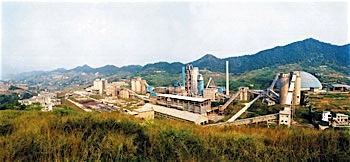Nanoengineered Concrete Could Cut CO2 Emissions
While government leaders argue about the
practicality of reducing world emissions of carbon dioxide, scientists and
engineers are seeking ways to make it happen.

LaFarge, Chongqing
While government leaders argue about the practicality of reducing world emissions of carbon dioxide, scientists and engineers are seeking ways to make it happen.
One group of engineers at MIT decided to focus its work on the nanostructure of concrete, the world’s most widely used building material. The production of cement, the primary component of concrete, accounts for 5 to 10 percent of the world’s total carbon dioxide emissions; the process is an important contributor to global warming.
“If everything depends on the organizational structure of the nanoparticles that make up concrete, rather than on the material itself, we can conceivably replace it with a material that has concrete’s other characteristics-strength, durability, mass availability and low cost — but does not release so much CO2 into the atmosphere during manufacture,” said Franz-Josef Ulm…
The work is just beginning. Ulm estimates that it will take about five years, and says he’s presently looking at magnesium as a possible replacement for the calcium in cement powder. “Magnesium is an earth metal, like calcium, but it is a waste material that people must pay to dispose of,” he said.
There are a number of aspects of structural design that waste surprising amounts of energy. I must admit I hadn’t considered energy consumed and carbon produced in the manufacture of construction materials.
The research was funded in part by the Lafarge Group — which makes great sense — since they are the largest cement/concrete producer on the planet.
Posted: Wed - February 7, 2007 at 06:18 AM